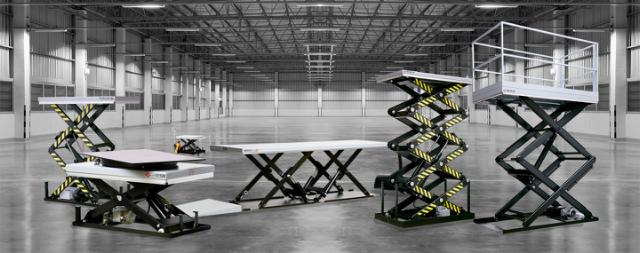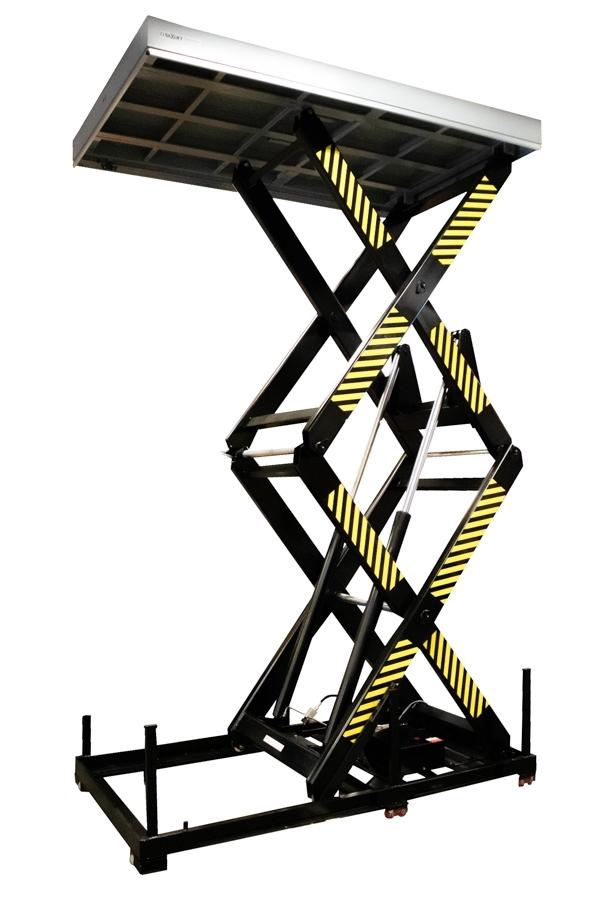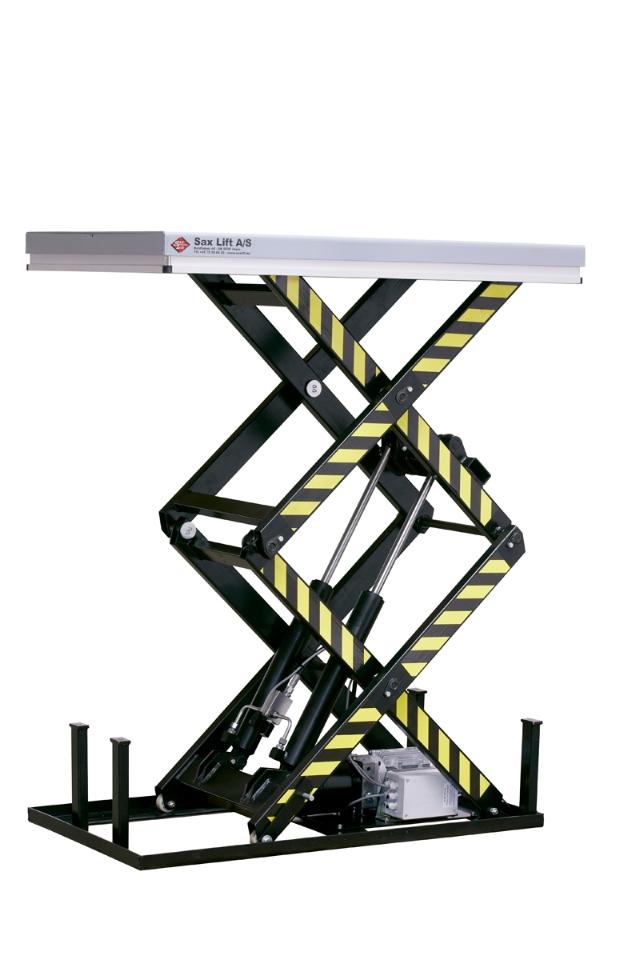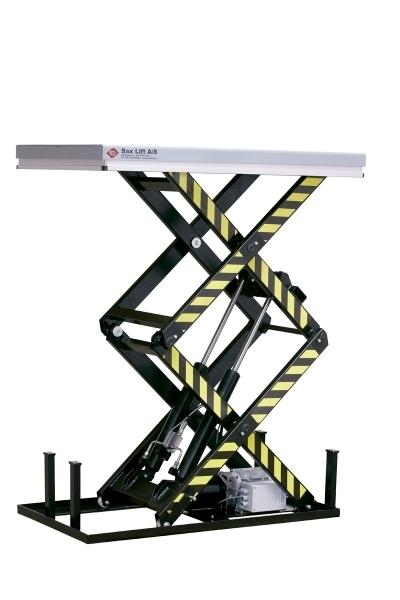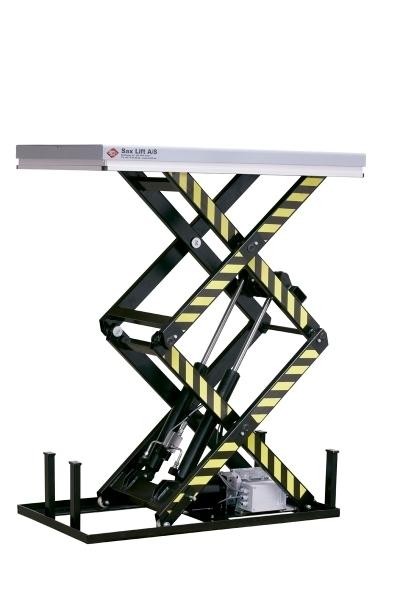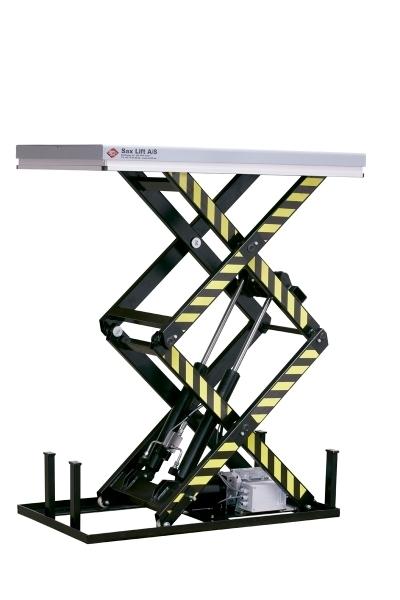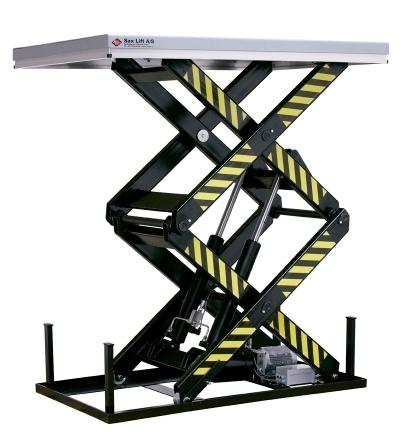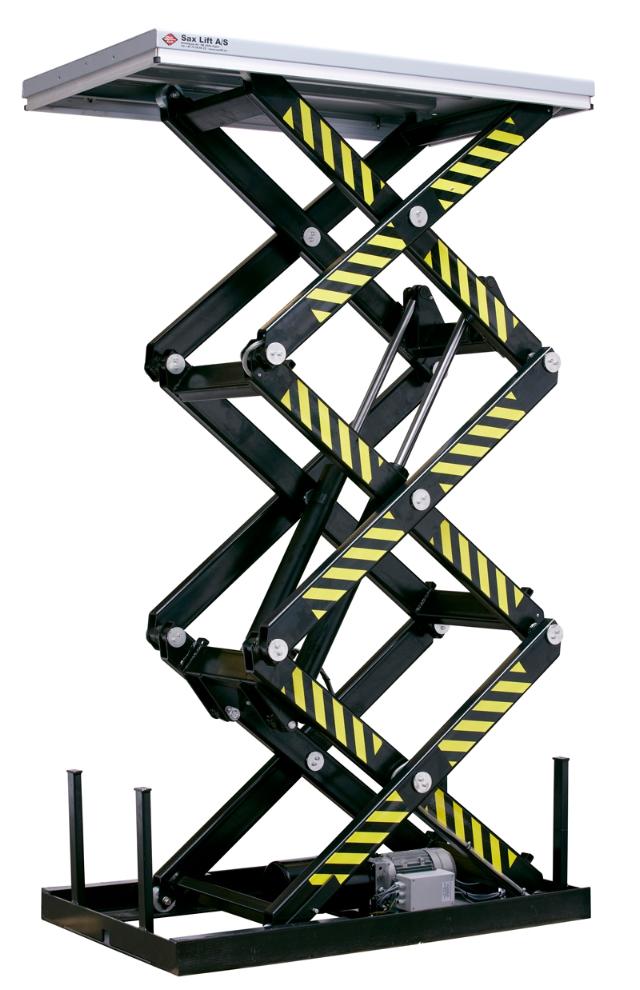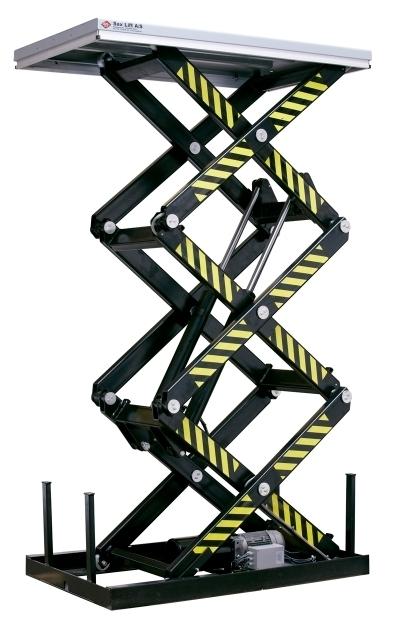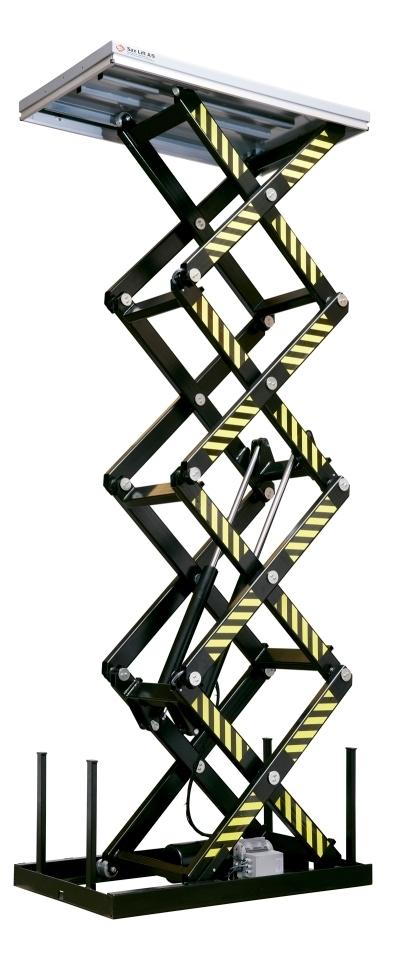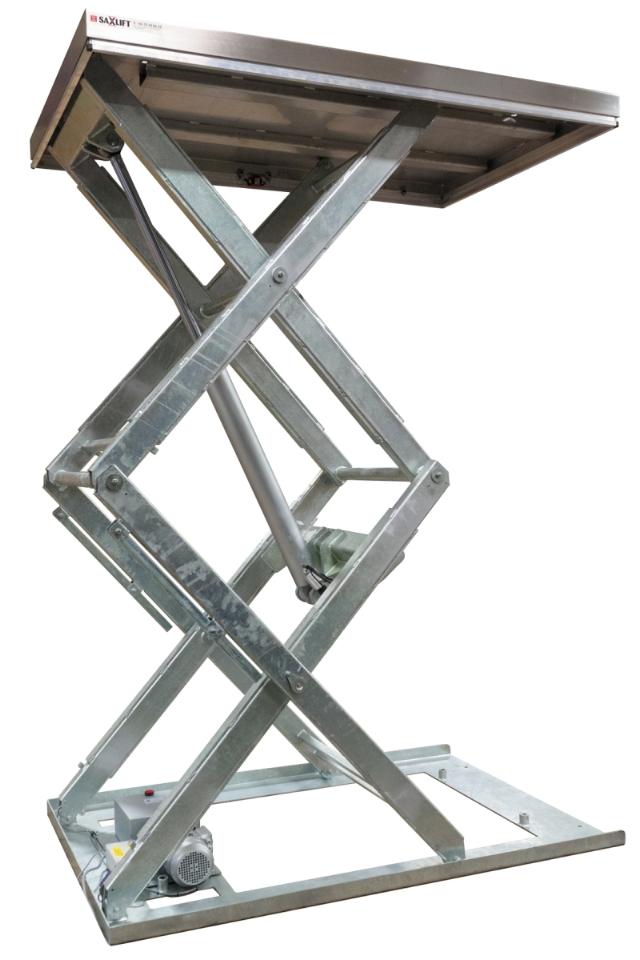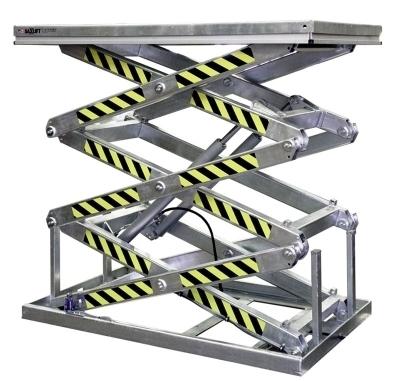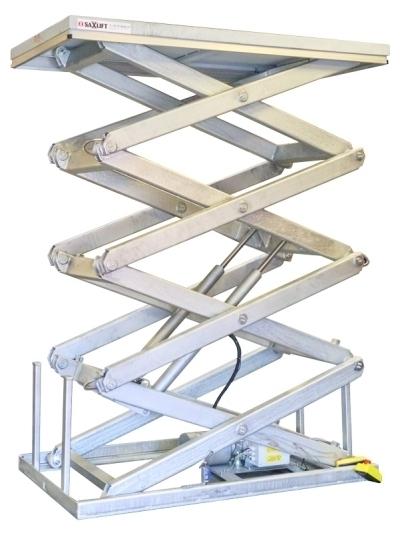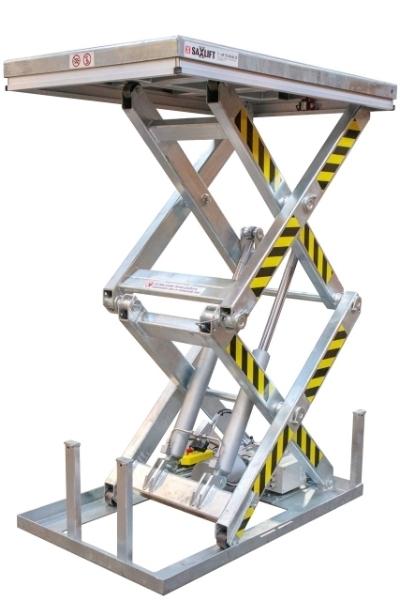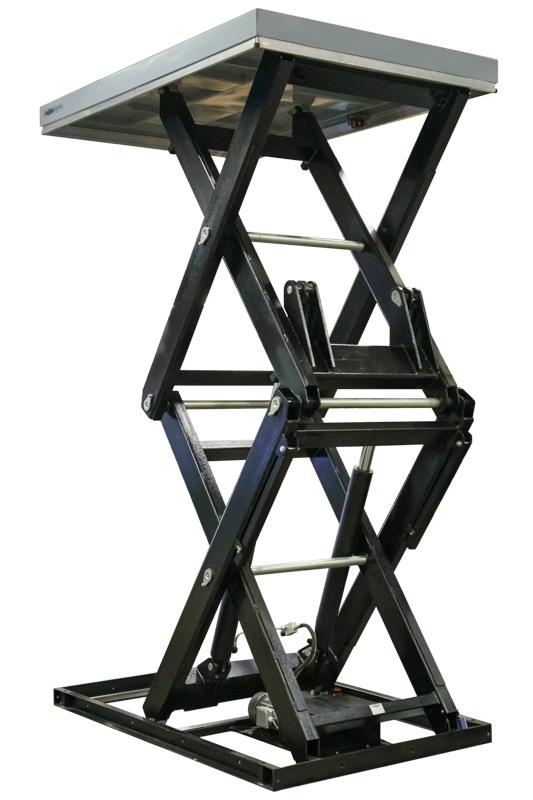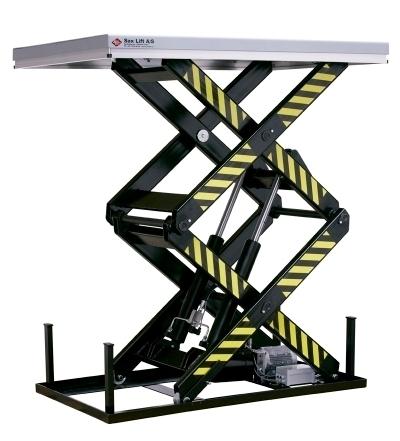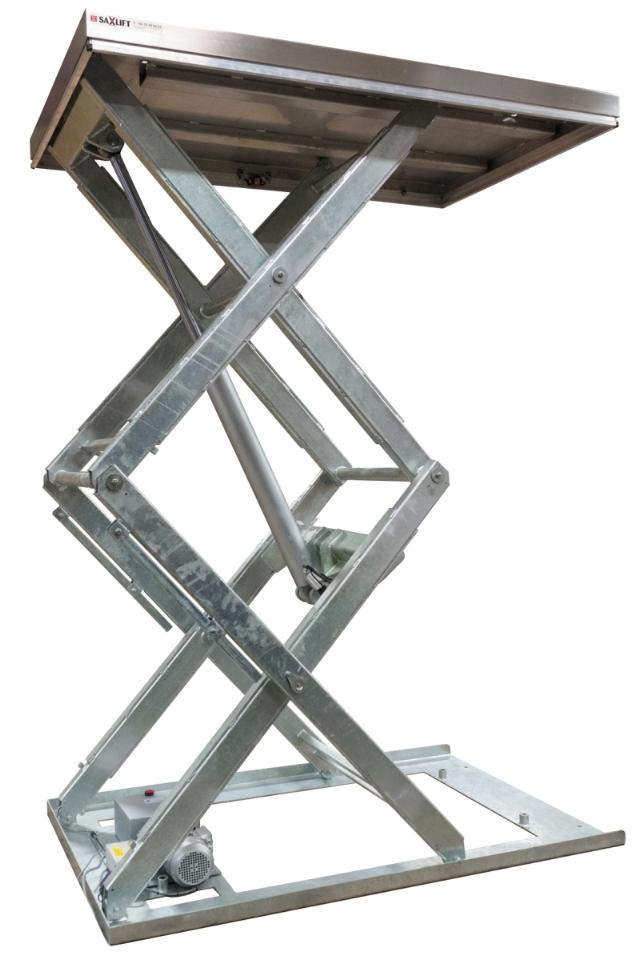Vertical scissor lift tables
Searching for hydraulic lift tables with high load capacity? Double vertical scissor lift tables can be your solution, with their robust design, weight capacity of up to 4000 kg, and of safety features. These lift tables can greatly enhance productivity and safety in heavy-duty tasks, ensuring effortless handling. Dive deeper to explore the diverse models available, ways to customize for your specific needs, safety aspects, and where to find the most suitable lift table for sale.
Vertical Scissor Lift Tables: A Comprehensive Guide
When it comes to handling heavy loads, nothing quite compares to the efficiency and versatility of vertical scissor lift tables.
These ergonomic powerhouses are your go-to for both standard and bespoke applications. Whether you're working with a double or even a triple scissor lift, you'll find that these lifts make your tasks easier, safer, and faster.
With vertical scissor lift tables, you can raise and lower heavy loads with precision, reducing the risk of injury and enhancing productivity. Each lift is equipped with user-friendly controls and robust construction for long-lasting performance.
No matter your lifting needs, there's a lift table solution that's engineered just for you. Invest in comfort, invest in efficiency - invest in a double vertical scissor lift table.
What is a Lift Table and How Does it Work?
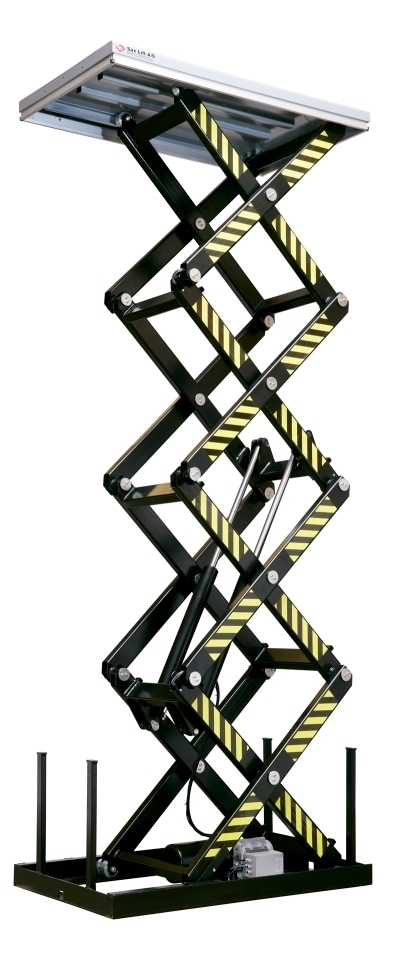
So, you're wondering what a lift table is and how it works?
Fundamentally, it's a platform that can be raised or lowered to different heights, powered by a hydraulic system.
They're commonly used in various industries for tasks such as lifting heavy loads, making them a versatile tool.
Understanding the Design of a Vertical Scissor Lift Table
Imagine the power of a machine that can lift up to 4000 kg effortlessly. That's the vertical scissor lift table for you. It's not just about lifting power, though. The design incorporates a focus on safety and ergonomics, ensuring user protection and ease of operation.
-
Customization and accessories: Tailor the lift table to your needs or solid designs and a variety of accessories.
-
Safety features: With features like a 24 V DC control unit, overload protection, and adjustable safety trip bars, it's built with your safety in mind.
-
Ergonomic design: The table's design prioritizes user comfort and efficiency.
-
Technical data and specifications: Understand the lift table's capabilities through detailed technical data, from lift stroke range to maintenance-free bearing surfaces.
This powerhouse is designed to work hard and smart.
How Hydraulic Systems Power Lift Tables
Understanding the power and versatility of a vertical scissor lift table is an impressive feat, but you might be wondering how exactly these tables work. The secret lies in their hydraulic systems.
When you operate double vertical scissor lift tables, a hydraulic pump pushes fluid into a cylinder, causing the piston to rise and lift the platform. This gives the tables their high load capacity.
As for safety and ergonomics, the tables are designed to lift heavy loads safely, reducing the strain on your body. Additionally, a relief valve is included to prevent overloading, adding an extra layer of safety.
Common Applications for Scissor Lift Tables
Scissor lift tables, with their robust layout and impressive load capacity, cover a wide range of applications across various industries.
They're particularly useful for:
-
Pallet Handling: Triple scissor lift tables can easily manage heavy pallets, making your warehouse operations smoother and more efficient.
-
Assembly Lines: These tables adjust to the right height for workers, reducing fatigue and increasing productivity.
-
Vehicle Loading and Unloading: With custom solutions, these tables help to load and unload vehicles safely, protecting your goods from damage.
-
Workshop Applications: From welding to carpentry, these lift tables can bring your work to a comfortable height, enhancing ergonomics and efficiency.
In short, scissor lift tables can revolutionize your operations, providing custom solutions for your industry-specific needs.
What are the Benefits of Double Vertical Scissor Lift Tables?

Have you ever wondered about the advantages of using double vertical scissor lift tables?
With their increased capacity for heavy loads, they could be a game changer in your work environment.
Let's discuss how these lift tables can provide ergonomic solutions, and whether a standard or bespoke model is right for you.
Increased Capacity for Heavy Loads
When it comes to handling heavy loads, nothing beats the robustness of double vertical scissor lift tables. Specifically, in the UK, they bespeak the epitome of industrial innovation.
Here's why:
-
Enhanced Load Capacity: Scissor lift tables provide the capacity to handle up to 4000 kg. That's a demonstration of their heavy-duty design.
-
Efficiency: They use a hydraulic system to lift loads, saving you time and energy.
-
Durability: The robust build guarantees they withstand the rigours of industrial use.
-
Customisation: You can opt for bespoke designs, tailoring the lift tables to your specific needs.
Ergonomic Solutions for Work Environments
Imagine, as a worker, constantly bending and straining to manage heavy loads - it's not just tiring, but potentially harmful.
Double vertical scissor lift tables act as game-changers, turning strenuous tasks into easy ones. They're not just tools, they're ergonomic solutions for your work environment. They can lift up to 4000 kg, reducing physical strain and improving productivity.
Their design complies with European safety standards, ensuring your safety is never compromised. Mobile, adjustable, and equipped with numerous safety features, these tables customize to fit your needs.
Standard vs. Bespoke Models: Which is Right for You?
Choosing between standard and bespoke models of double vertical scissor lift tables might feel overwhelming.
But don't worry, we're here to help.
- Standard models are ready-to-use, offering high quality at a lower cost.
They're perfect if you're after efficiency and economy.
- Bespoke models are custom-made to suit your specific needs.
They're the go-to if you've got unique requirements that standard models can't meet.
- Standard models usually have quicker delivery times.
But if you're not in a rush, bespoke models are worth the wait.
- Remember, either choice provides the key benefits of these tables: improved safety, higher efficiency, and reduced worker fatigue.
How to Choose the Right Scissor Lift Table for Your Needs?
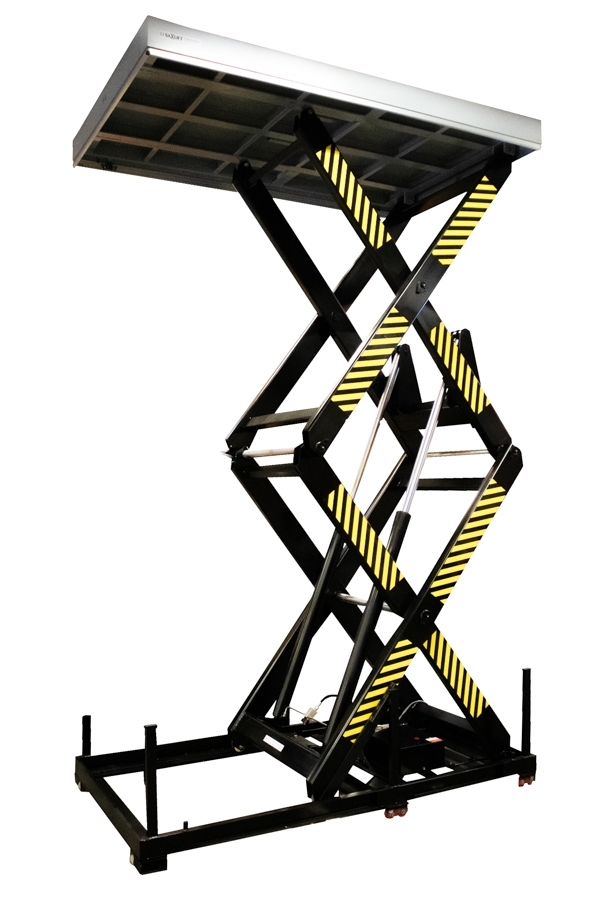
Choosing the right scissor lift table for your needs can be a game-changer.
Start by evaluating your lifting requirements and then examine the capacity and power specifications of various options.
Don't forget to compare double and triple scissor lift tables to find your perfect match.
Assessing Your Lifting Requirements
Reflecting on your lifting requirements? Selecting the right scissor lift table isn't as intimidating as you might think.
It's essential to assess your needs accurately to guarantee a safe and efficient working environment.
Here are four key factors to take into account:
-
Type of Material: What're you lifting? The size, weight, and type of material greatly influence your choice.
-
Frequency of Use: How often will the lift be used? Regular, heavy use demands a robust, durable model.
-
Work Environment: Is it a warehouse, construction site, or a retail store? Different environments require different specifications.
-
Budget: While quality shouldn't be compromised, it's still important to evaluate how much you're willing to spend.
Evaluating Capacity and Power Specifications
Now that you've pinpointed what you're lifting, how often, in what conditions, and your budget, it's time to move into the nitty-gritty of capacity and power specifications.
Dig into the maximum load capacity of the lift table. Can it handle the weight of your items? Check if the length fits your needs.
Evaluate the lift stroke - does it provide the height you require? Explore the lifting time, guaranteeing quick and efficient operations.
Don't forget to account for the electrical system. Is it robust enough to withstand your working conditions?
Finally, consider maintenance aspects. Does it feature elements that reduce upkeep needs?
Carefully evaluating these factors guarantees you choose a scissor lift table that's truly tailored to your needs.
Are Hydraulic Lift Tables Safe to Use?
You might be wondering, are hydraulic lift tables safe to use?
Let's explore the safety features of vertical scissor lift tables, understand the best practices while operating them, and look into maintenance tips for peak performance.
This way, you'll not only have a powerful tool, but also the peace of mind that comes with knowing it's safe.
Understanding Safety Features of Vertical Scissor Lift Tables
Although it's natural to question the safety of using vertical scissor lift tables, rest assured that these hydraulic tables are designed with multiple safety features.
Here are some key safety features you should know:
-
Overload Protection: This feature prevents the table from lifting loads that exceed its maximum capacity, ensuring it won't fail under excessive weight.
-
Safety Spacing: Spaces are provided between all moving parts to minimize the risk of pinching or crushing injuries.
-
Trap Prevention Safety Trip Bars: These are present on all sides of the platform and immediately stop the lift table if an object or person gets too close.
-
Control Unit: A 24V DC control unit with a deadman switch adds an extra layer of safety, allowing the operator to halt operation instantly.
Best Practices for Operating Lift Tables
To guarantee the safe operation of hydraulic lift tables, it's crucial to follow a few best practices.
Always check the load capacity before use; overloading can lead to accidents. Use the lift table on a flat, stable surface to maintain balance. Remember to engage the safety features, including the deadman switch and overload protection.
Make sure that no part of the body is under the table during operation. Keep the area around the lift table clear of obstructions.
Regularly inspect the table for wear or damage, but save detailed maintenance for later, as that's a different topic.
Finally, always follow the manufacturer's instructions. Safety isn't just a priority; it's a necessity.
Maintenance Tips for Optimal Performance
Maintaining your hydraulic lift tables not only guarantees their ideal performance but also greatly enhances their safety.
Here are four simple yet effective maintenance tips:
-
Regular Inspection: Always check the lift's mechanical components for wear and tear. Look out for any signs of hydraulic fluid leakage.
-
Lubrication: Keep all moving parts well-lubricated. This reduces friction and prevents premature wear.
-
Cleanliness: Confirm the lift's surfaces are clean. Dust and debris can interfere with the lift's operation.
-
Professional Servicing: Despite your best efforts, some issues require a professional's touch. Don't hesitate to call in a technician for regular servicing or when you spot a problem.

